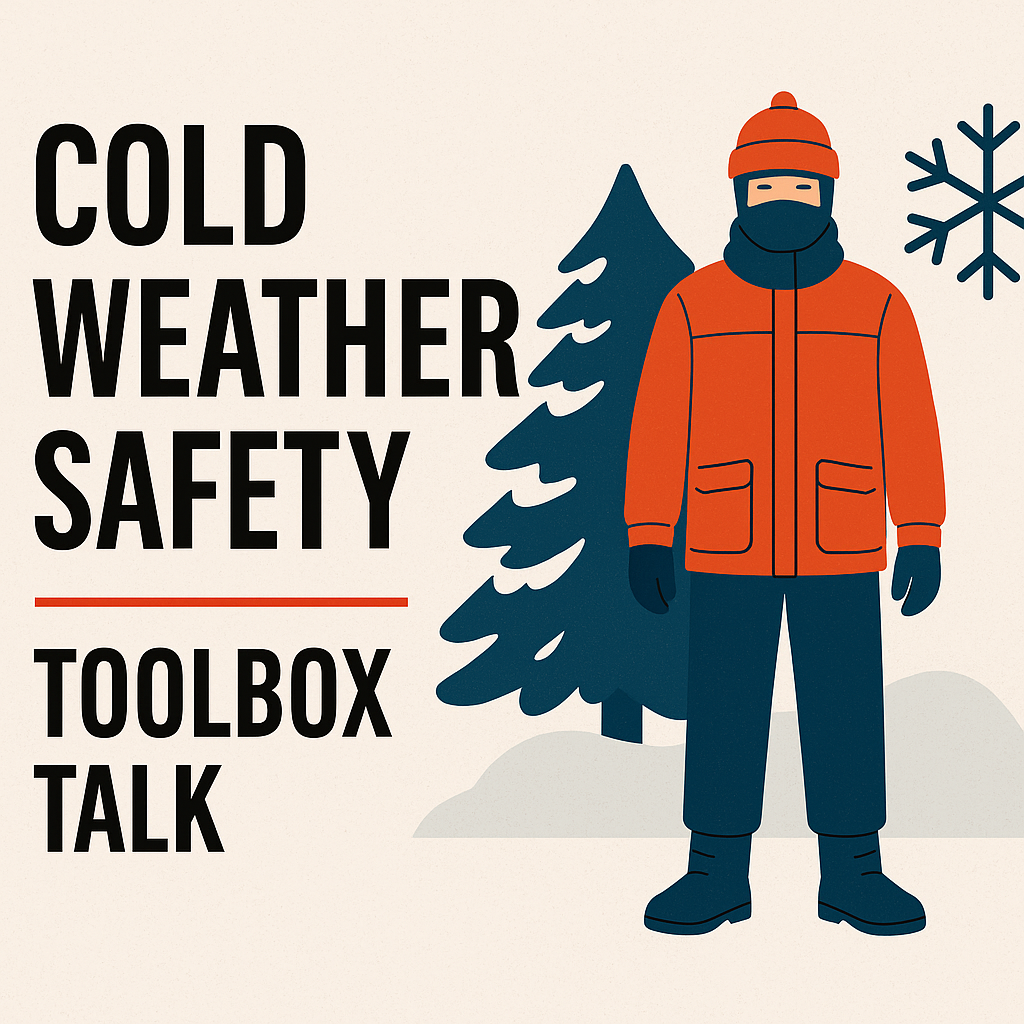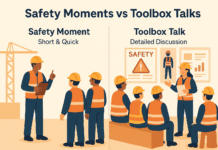
Cold Weather Safety TBT
Good morning team,
Today’s talk is about Cold Weather Safety — an essential topic for anyone working outdoors or in cold environments.
Cold weather is more than just uncomfortable. It can lead to frostbite, hypothermia, and other cold-related illnesses. It can also reduce our physical performance, increase the chance of accidents, and affect the safe operation of tools and machinery.
If we understand the hazards, recognize the warning signs, and take preventive measures, we can work safely even in extreme cold.
1. Why Cold Weather Safety Matters
- Prolonged exposure to cold can be life-threatening.
- Cold stress affects your body’s ability to regulate temperature.
- Reduced dexterity from numb fingers can cause mistakes and accidents.
- Slippery conditions increase the risk of falls.
2. Common Cold Weather Hazards
- Low Temperatures – Direct exposure to freezing or below-freezing air.
- Wind Chill – Wind increases heat loss from your body, making it feel colder than the air temperature.
- Wet Clothing – Water conducts heat away from the body rapidly, increasing the risk of hypothermia.
- Ice and Snow – Create slip, trip, and fall hazards.
- Reduced Visibility – Snow and fog can hide hazards and affect machinery operation.
3. Cold-Related Illnesses and Injuries
3.1 Hypothermia
- Body temperature drops below 35°C (95°F).
- Symptoms: shivering, slurred speech, confusion, slow breathing, loss of coordination.
- Severe cases can lead to unconsciousness and death.
3.2 Frostbite
- Freezing of skin and underlying tissues.
- Symptoms: numbness, white or greyish skin, hard or waxy feel.
- Common in fingers, toes, ears, and nose.
3.3 Chilblains
- Inflammation of small blood vessels in the skin due to repeated exposure to cold but not freezing air.
- Causes red, itchy patches on the skin.
4. Prevention Strategies
4.1 Dress Appropriately
- Wear layers:
- Base layer – Moisture-wicking to keep sweat off skin.
- Middle layer – Insulating (fleece or wool).
- Outer layer – Windproof and waterproof.
- Cover head, neck, and hands.
- Wear insulated, waterproof boots.
4.2 Stay Dry
- Change wet clothing immediately.
- Use waterproof outer gear in snow or rain.
4.3 Schedule Work Wisely
- Limit exposure during extreme cold.
- Take breaks in heated shelters.
- Schedule heavier tasks during warmer parts of the day.
4.4 Maintain Energy and Hydration
- Eat high-energy foods.
- Drink warm, non-caffeinated, non-alcoholic beverages.
- Even in cold weather, you can become dehydrated.
5. Recognizing and Responding to Cold Stress
Hypothermia Response:
- Move the person to a warm area.
- Remove wet clothing and wrap in blankets.
- Provide warm, sweet drinks (no alcohol).
- Call emergency services for severe cases.
Frostbite Response:
- Move to a warm place.
- Warm affected area with body heat or warm (not hot) water.
- Do not rub or massage — this can cause more damage.
6. Slips, Trips, and Falls in Cold Weather
- Wear slip-resistant footwear.
- Keep walkways clear of snow and ice.
- Use salt, sand, or de-icer where needed.
- Take shorter steps and walk slowly.
7. Do’s and Don’ts
✅ Do:
- Wear multiple layers and appropriate PPE.
- Take breaks in warm areas.
- Monitor yourself and co-workers for signs of cold stress.
- Keep spare dry clothing available.
❌ Don’t:
- Ignore early warning signs of hypothermia or frostbite.
- Work outside for long periods without breaks.
- Wear cotton next to skin — it traps moisture.
- Consume alcohol — it increases heat loss.
8. Real-Life Case Study
A construction worker was clearing snow from a roof on a windy, -10°C day. He wore a thick jacket but no hat or gloves. After 2 hours, his hands were numb, and he began shivering uncontrollably. He collapsed before finishing the job. Co-workers got him to a heated break room, and he was diagnosed with mild hypothermia.
Lesson: Even mild cold can be dangerous if you’re not fully protected.
9. Worker Engagement – Q&A
- What’s the best way to dress for cold weather?
- How does wind chill affect body temperature?
- Name two signs of frostbite.
10. Closing Words – Bringing It Back to the Start
Alright team, we started this morning talking about how cold weather isn’t just uncomfortable — it can be dangerous.
Your best protection is preparation:
- Dress in layers.
- Stay dry.
- Take breaks to warm up.
- Watch out for each other.
If you feel numb, start shivering, or see pale skin, act immediately — don’t wait for it to get worse.
Let’s stay warm, stay safe, and make sure we all go home healthy at the end of the day.
Stay alert, stay safe, and let’s have a productive day.
























